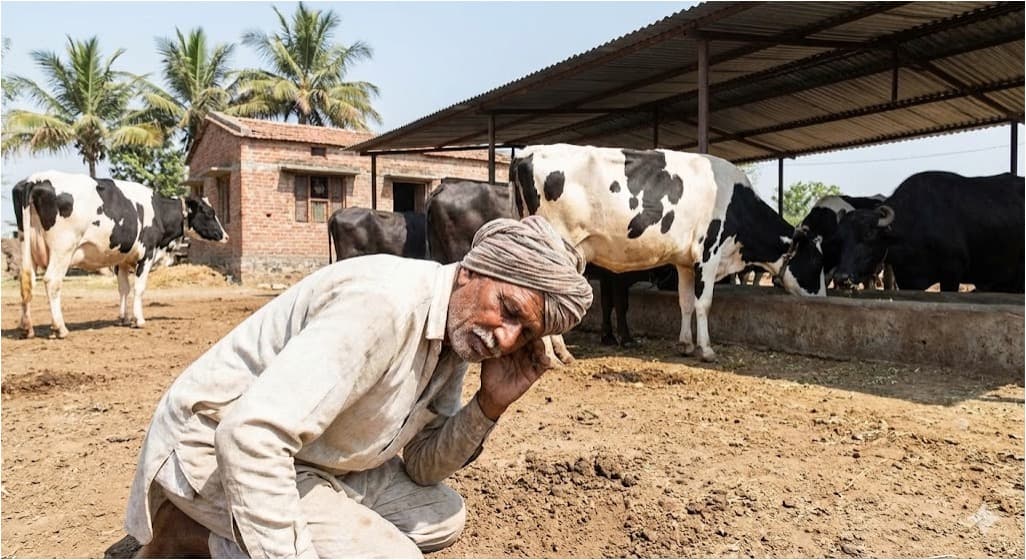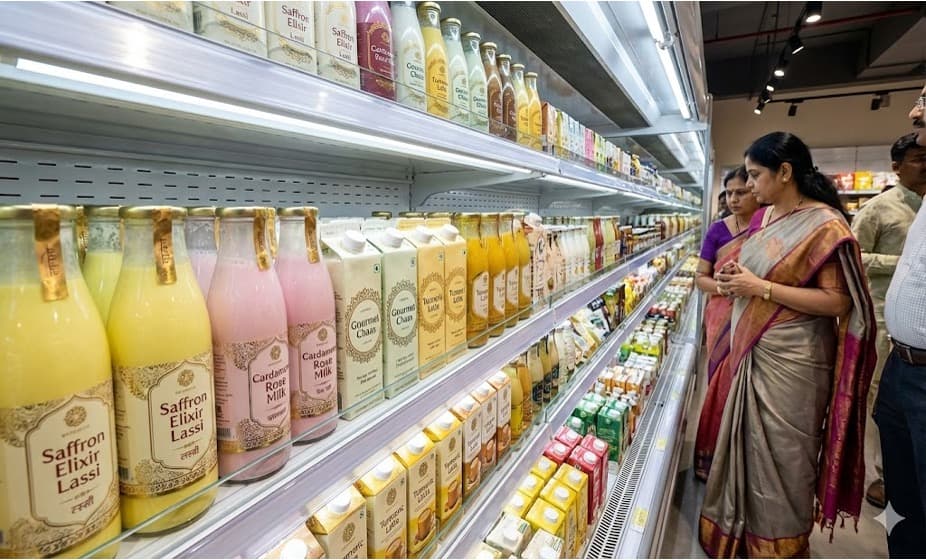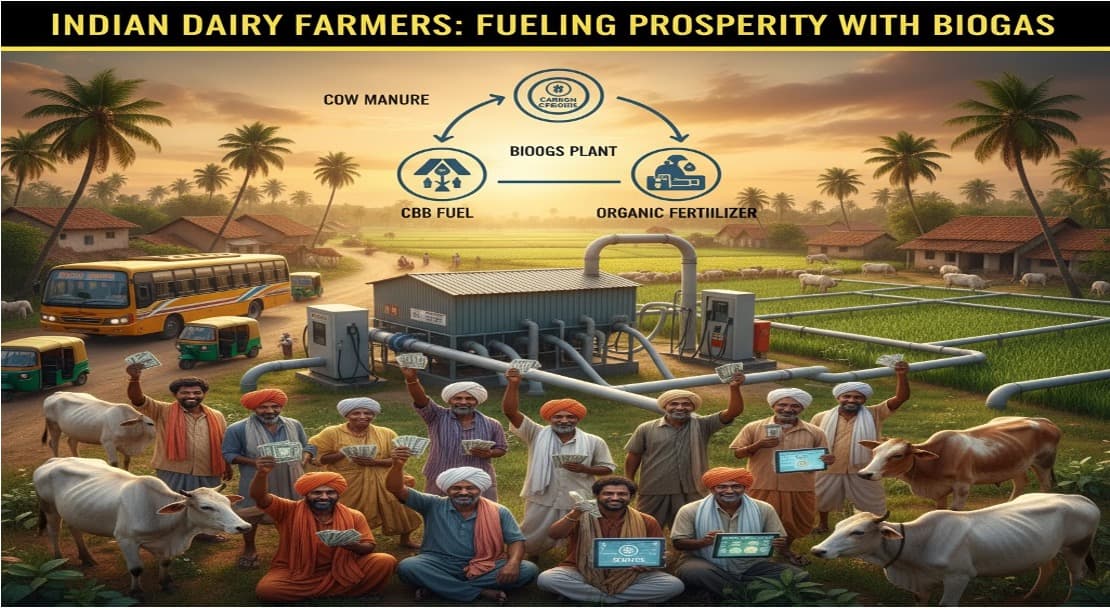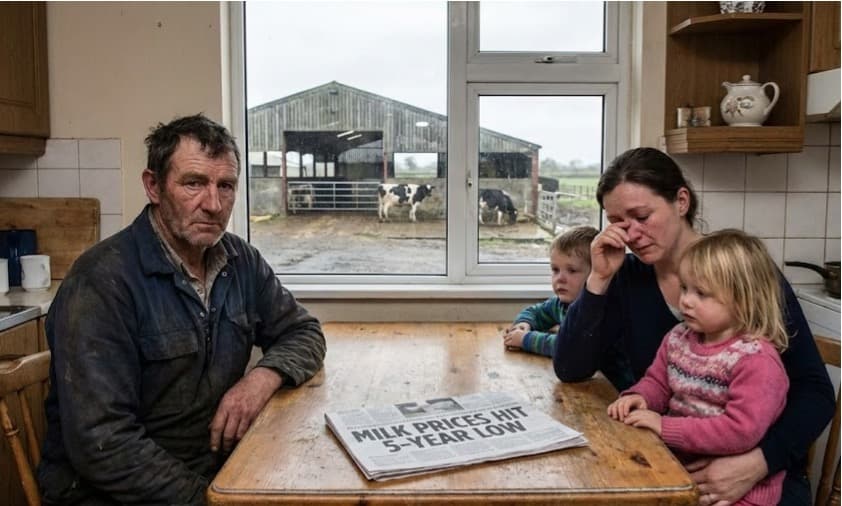India's Livestock Economy is in Danger
Livestock contributes about 4.11% to the total GDP of India and 25.6% to the agricultural GDP, this sector strengthens the economic base of rural India. For example, the dairy sector alone has propelled India to become the largest milk producer globally. For example, dairy, being the largest agricultural commodity in India, contributes 5% to the national economy. It remains less volatile than crop-based agriculture, as evidenced by Amul's steady growth amid economic ups and downs. Brands like Mother Dairy have taken the lead in diversifying dairy products and introducing products like probiotic curd, which has increased the profitability of the sector.
With exports of buffalo meat products, India displays a strong presence in the global meat market, leveraging its livestock sector to reap the economic benefits of international trade. For farmers, livestock protects against agricultural risks; For example, states like Punjab and Haryana have high farm incomes and low distress, partly due to their integrated crop-livestock farming systems. Livestock is important for rural employment, employing more than 20 million people. Dairy cooperative sector giant Amul is a testimony to the employment in this sector, which is directly associated with lakhs of dairy farmers. According to the Employment and Unemployment Survey 2011-12, 12 million rural women engage in livestock rearing, which empowers them financially and socially.
The sector facilitates employment generation in related sectors such as veterinary care and fodder production, important for the rural economy. It extends beyond primary farming to include an ecosystem of services and industries.
Livestock farming acts as a buffer for rural workers during the non-agricultural season, providing consistent income. Additionally, schemes like MNREGA integrate livestock-related activities to provide seasonal employment opportunities. Livestock contributes significantly to the income of small farming households – 16% compared to an average of 14% for all rural households – highlighting its role in increasing rural incomes. India's strong production with over 156 million tonnes of milk ensures a continuous supply of dairy products through companies like Amul, thereby increasing protein intake across various socio-economic levels. The dairy sector boosted by Operation Flood has catapulted India to a global leader in milk production, thereby directly enhancing the nutritional security of its population. The production of 75 billion eggs establishes the poultry industry as a major component in providing essential nutrients, supported by initiatives such as the National Poultry Development Programme.
Livestock farming increases rural incomes, as seen in states such as Punjab and Haryana, by allowing households to diversify their diets beyond vegetarian staples due to substantial meat production. India's emphasis on zero waste through practices such as the use of sugarcane by-products for feed supports sustainable livestock rearing, as can be seen in the cooperative efforts of organizations such as Suguna Foods. The contribution of livestock to food security is evident in programs like the Midday Meal Scheme, where eggs and milk are the main components, with their adequate production in India helping to tackle malnutrition among school-going children.
Effective implementation of programs like the National Livestock Mission is essential to maximize the potential of the livestock sector. The combination of the Gokul Mission, National Livestock Mission, and Dairy Processing and Infrastructure Development Fund is important. This will ensure sustainable growth, employment, and nutritional security, thereby strengthening the sector's fundamental role in India's socio-economic progress. But livestock receives only 12% of the total public expenditure on agriculture and allied sectors and 4-5% of the total institutional credit flow to the sector. Barely 6% of livestock is insured. The rise of the livestock sector has implications for poverty. Rural poverty is lower in states where livestock contributes more to agricultural income. Punjab, Haryana, Jammu and Kashmir, Himachal Pradesh, Kerala, Gujarat and Rajasthan are examples of this. Most of the marginal farmers and people who have left farming are joining the livestock business.









